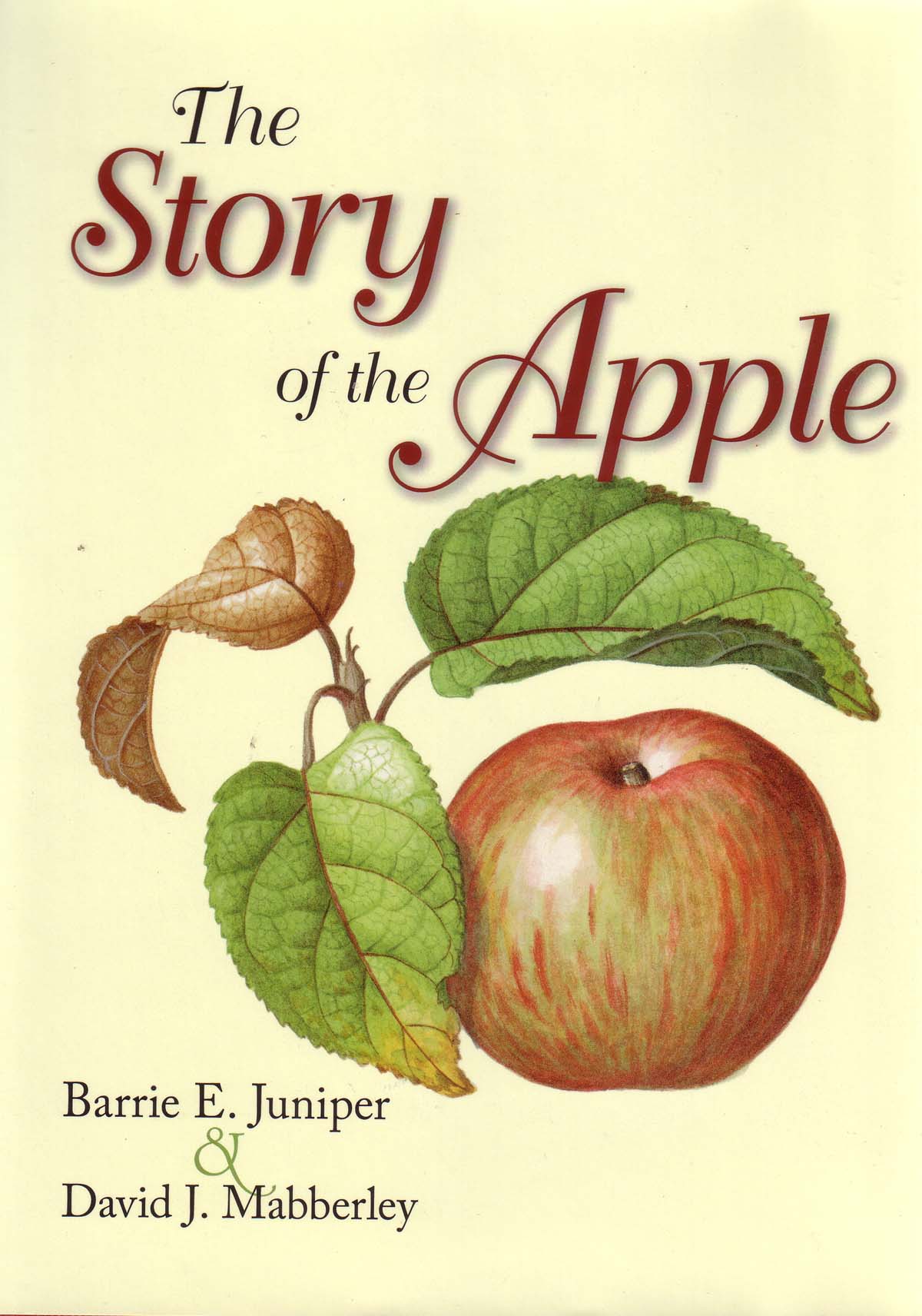Story of the Apple, Theby: Barrie E. Juniper and David J. Mabberly
Portland OR:
Timber Press 2006, $29.95, Hardbound
ISBN: 978-0-88192-784-9
Reviewed by: Jacqueline M. Newman
Spring Volume: 2007 Issue: 14(1) page(s): 21
 Where did the apple originate? The authors believe earthquakes in Tian Shan, expanding deserts, and the eating habits of bears and horses are possibilities when the apple first moved about, then Silk Roads and other trading routes helped it meander. Where did the apple originate? The authors believe earthquakes in Tian Shan, expanding deserts, and the eating habits of bears and horses are possibilities when the apple first moved about, then Silk Roads and other trading routes helped it meander.
What are Apples? Read responses to these and other queries in chapters titled: Origin of the Apple; Archeology and the Apple; Apples and Grafting; Western Migration of the Apple; and more. These are fascinating chapters with fascinating information. Discussing migration, one chapter says "the oldest record of the sweet apple in China dates from 2,300-2,400 years ago." It goes on to say...that "the oldest use of terms generally accepted to refer to the cultivated apple seem to be found in early Chinese literature...in a...prose poem entitled 'Shang Lin Fu' by Sima Xiangry (179-118 BCE)." The nai is often translated as the Chinese word for apple or sometimes crab apple; this has been found in a book by Li Fan, on the history of cultivated plants in China. At Jiangling Tombs, apple seeds were discovered dated from the Warring States period (475-221 BCE). Even with this information, one learns that apples may not have originated in China but got there on trade routes to and from Inner and Central Asia. So, the Apple's origin is still open to question as is: When were they first known to man? The authors extensive research points to a few species present in central, eastern, and western Europe immediately following receding glaciers. The exact date given to their origin is the Eocene Epoch of the Tertiary Period. That means they were around about fifty-five to thirty-three million years ago, the exact location not exactly clear. Apple dispersal and apple populations were distributed by birds, then by mammals. Yet the authors say: "It seems likely that something resembling a species in the modern genus may have begun in southern China, specifically in Guizhou, Sichuan, and the Yunnan provinces." The likelihood is because fifty-five different species can be traced to these three provinces. The variety known as 'Malus' accounts for two-thirds of those in Eastern Asia. It also accounts for three-fifths of all apples in the entire world be they sweet and popular, white, green, or red. The Story of the Apple is fascinating. It is a must for those interested in origin and history, in anthropology and archeology, and in what effect this plant had on the world. The two university prof authors are from two continents and they kept me mesmerized from page one to the last page. Read and be captivated by this simple pome fruit; and learn what they still do not know about apples.
|

 Where did the apple originate? The authors believe earthquakes in Tian Shan, expanding deserts, and the eating habits of bears and horses are possibilities when the apple first moved about, then Silk Roads and other trading routes helped it meander.
Where did the apple originate? The authors believe earthquakes in Tian Shan, expanding deserts, and the eating habits of bears and horses are possibilities when the apple first moved about, then Silk Roads and other trading routes helped it meander. 